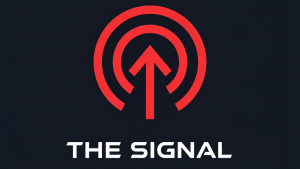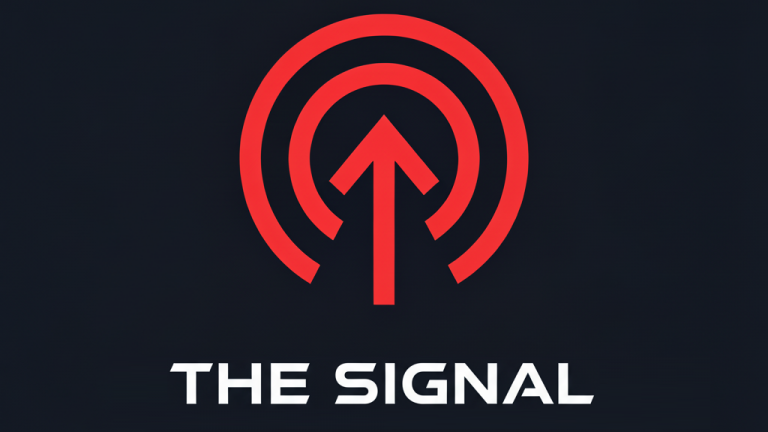Executive Summary
The first week of September delivered a powerful and unified message to investors: weak jobs reports, the U.S. labor market is cooling, and fast. A cascade of weaker-than-expected employment data, culminating in a shockingly low Non-Farm Payrolls report, solidified market conviction that the Federal Reserve not only has the justification but a clear mandate to begin cutting interest rates. This created a classic “bad news is good news” dynamic, where signs of economic deterioration were cheered as a green light for looser monetary policy, propelling equities, particularly the tech-heavy NASDAQ, to a strong weekly gain.
This Week in the Markets: By the Numbers
The week was characterized by a divergence in performance among the major indices. While the prospect of lower interest rates lifted technology and growth-oriented stocks, concerns about the underlying economic slowdown weighed on more cyclically-sensitive industrial names. The NASDAQ Composite led the charge, while the Dow Jones Industrial Average finished in the red.
| Index | Closing Value (Aug 29, 2025) | Closing Value (Sep 5, 2025) | Weekly Change | Weekly % Change |
| S&P 500 | 6,460.26 | 6,481.50 | +21.24 | +0.33% |
| NASDAQ Composite | 21,455.55 | 21,700.39 | +244.84 | +1.14% |
| Dow Jones Ind. Avg. | 45,544.88 | 45,400.86 | -144.02 | -0.32% |
Economic Crossroads: Labor Market Falters While Services Sector Holds Strong
A week of conflicting economic data has created a puzzle for investors. A series of reports painted a picture of a rapidly weakening labor market, fueling expectations for a Federal Reserve rate cut. However, a surprisingly strong report from the U.S. services sector has complicated the narrative, intensifying the debate over whether the economy is headed for a “soft landing” or a more serious recession.
Labor Market Flashes Red
The week’s main story was the clear and consistent cooling of the U.S. job market.
- The trend started with the Job Openings and Labor Turnover Survey (JOLTS), which showed job openings fell to 7.181 million, missing forecasts.
- This was followed by the ADP National Employment Report, showing private employers added only 54,000 jobs in August—a significant slowdown.
- The week ended with the official Non-Farm Payrolls (NFP) report, which revealed the economy added a mere 22,000 jobs, a massive miss compared to the 75,000 expected. The unemployment rate also rose to 4.3%, a near four-year high.
This collection of data has shifted the market’s focus from if the labor market is cooling to how fast it’s deteriorating.
Services Sector Shows Surprising Strength
In stark contrast, the Institute for Supply Management’s (ISM) Services PMI report suggested accelerating growth in the largest part of the U.S. economy.
The headline index for August registered 52.0, a notable increase from the previous month and comfortably beating forecasts. A reading above 50 indicates expansion.
However, a look at the details raises a key concern. The report’s Employment sub-index remained in contraction territory at 46.5. This divergence points to potential “jobless growth,” where companies increase output without hiring more staff—a classic late-cycle economic signal.
This conflicting data has created a clear divide among investors.

The Bull Case: Bulls see the weak labor data as “bad news is good news.” They believe the poor jobs numbers force the Federal Reserve to cut interest rates, which is a powerful catalyst for stocks. The strong services data, meanwhile, keeps immediate recession fears at bay, supporting the “soft landing” narrative.

The Bear Case: Bears argue the market’s optimism is dangerously shortsighted. They see the collapsing labor metrics as a major recessionary signal. From this view, the Fed isn’t being proactive; it’s being forced to react to severe economic damage that will ultimately hurt corporate profits and make the current market rally unsustainable.
Why It Matters for Investors
The core question for investors is whether the Federal Reserve will be cutting interest rates into a resilient economy (the bullish “soft landing” scenario) or into an economy already tipping into recession (the bearish view). The outcome will have a significant impact on market direction. Upcoming data on inflation (CPI) and consumer spending will be critical for determining which narrative prevails.
Corporate & Tech Spotlight
Tesla’s Audacious Future: The $1 Trillion Pay Package
Tesla (TSLA) made a stunning move by proposing a new 10-year compensation plan for CEO Elon Musk, potentially worth $1 trillion.
The plan’s payout is tied to hitting extremely aggressive targets, including growing Tesla’s market cap to $8.5 trillion and achieving major milestones in its robotics and robotaxi businesses. This proposal is a strategic maneuver to ensure Musk’s long-term focus remains on Tesla, aiming to shift the narrative from current headwinds—like falling profits—to a future of transformative, exponential growth.
The AI Arms Race Meets Geopolitical Reality
The relentless push into artificial intelligence by tech giants collided with global strategy this week. The U.S. government revoked a waiver that allowed Taiwan Semiconductor Manufacturing Company (TSMC) to ship certain U.S.-made chipmaking tools to its facility in China.
This move is designed to slow China’s technological advancement but introduces significant friction into the global semiconductor supply chain. Companies like Meta (META), which are spending billions on AI infrastructure, could now face higher costs or supply disruptions for the critical chips that power their ambitions, adding a new layer of risk to the “AI bubble.”
All Eyes on Apple: The Calm Before the Storm
While the company itself was quiet, the market’s attention was fixed on Apple’s (AAPL) upcoming media event on Tuesday, September 9.
Analyst previews and detailed leaks have built major anticipation for the expected launch of the iPhone 17 lineup, which may feature a new ultra-thin “Air” model, alongside a new Apple Watch and AirPods Pro. For a company of Apple’s scale, product cycles are critical growth drivers, and this event represents a major catalyst for the stock and the broader tech sector.
Looking Ahead to Next Week
After a week laser-focused on the health of the U.S. labor market, investors’ attention will pivot squarely to the other side of the Federal Reserve’s dual mandate: inflation. The upcoming week of September 8-12, 2025, is packed with key price data that will determine whether the market’s newfound confidence in a dovish Fed is justified.
The main events on the U.S. economic calendar will be the inflation reports for August. On Wednesday, September 10, the Producer Price Index (PPI) will provide a look at inflation at the wholesale level. This will be followed by the week’s most critical release on Thursday, September 11: the Consumer Price Index (CPI). After the jobs data all but confirmed the reason for the Fed to cut rates, the CPI report will show whether the Fed can cut without risking a resurgence in inflation. Market consensus is bracing for a slight uptick in the annual inflation rate to the 2.8% to 2.9% range.
The market will be searching for a “Goldilocks” inflation report—one that is soft enough to validate the Fed’s dovish turn but not so cold that it signals a deflationary collapse in economic demand. An upside surprise in the CPI data could seriously spook markets, as it would directly challenge the narrative of a smooth and sustained path to lower interest rates that was so firmly established this past week.



















